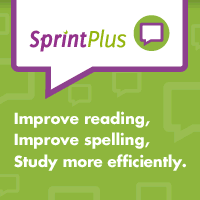How can I develop literacy skills for learners affected by dyslexia?
I found this excellent blog article from Deborah Jones, Associate Lecturer in Post Compulsory Education and Training at Northumbria University about how to develop literacy skills for learners affected by dyslexia.
Read on to find out more.....
A common question asked in our teaching sessions.
There are so many specific learning difficulties in terms of literacy. One such difficulty is dyslexia, which can affect learners significantly in terms of their personal and professional lives if not addressed. In this blog, I will compare and contrast the strategies used to develop literacy skills within the context of dyslexia support. Please bare with my ramblings!
To summarise, dyslexia is an information processing difficulty which can affect aspects of working memory, phonological awareness, sequencing and visuo-motor skills (Bartlett, D 2000). Working memory stores the information we need to keep in our minds for a short period of time. For example, when meeting someone for the first time, we need to remember their name. The retaining and manipulation of information in the mind can prove challenging for the dyslexic person. In terms of phonological awareness, dyslexic learners may have difficulty decoding the phonological segments of words and of associating letters to sounds and sounds to letters (ibid). Sequencing is needed to recognise order of letters in a word and ordering of sounds in these words. Examples of sequencing difficulties are reciting the alphabet and following instructions. Visuo-motor skills are used in tasks such as writing, copying and orientation (ibid). The reversal errors of misplacing b with d are argued to be due to poor visuo-motor skills.
The dyslexic learner requires coping strategies which have these key areas of concern at the forefront of the consideration. If these problem areas can be addressed and assessed on an individual basis, the tutor and learner can begin to work with the specific areas of concern. It is important to remember as a teacher, however, that dyslexia is individual. All learners will have individual learning styles and different profiles (Green and Reid 2007). Assessment of the areas of concern in terms of literacy development include testing accuracy and speed of reading, reading comprehension, spelling, copying, note taking and free writing (Bartlett, D 2000). I have on occasion carried out a miscue analysis with learners to pinpoint the type of spelling errors made. A learner with a poor visual memory may spell phonetically and confuse homophones. A learner who has poor phonological skills may position letters in the wrong place or omit altogether.
This is why it It is so important to carry out an initial assessment; to establish a level at which the student is currently working to ensure the texts used in the various literacy tests are appropriate for the learner. Learners should be consulted on any problems with hearing or seeing, as they may be contributing to a particular difficulty (Pollock and Waller 1994).
 |
To the dyslexic learner, acquiring and learning literacy is likely to be hindered by the physical and cognitive barriers described. I tend to recall the teachings of Broomfield and Combley (1997) that over-learning is necessary in teaching dyslexic adults, as skills are more likely to become automatic this way. There is a significant benefit to using this strategy in my experience. I believe that this approach should also be combined with a multisensory teaching programme to tackle the specific literacy needs of the learner. It is important for dyslexic learners to see, hear and feel in terms of learning to read and write. Broomfield and Combley (1997) write that the multisensory approach assists the development of automatic links between sound and symbol. Kinaesthetic approaches to teaching are also associated with the multisensory approach. This approach combines input (seeing and hearing) with output (speaking and writing) (ibid). For a number of years, I used a computer programme called the Adult Literacy Programme (2004) with some learners, which is a structured, multisensory programme which focuses on over-learning and tackles literacy at word and phoneme level before moving onto text level. It is mapped to the Literacy Core Curriculum (2001), which is still useful to refer to today, and therefore relevant to learners’ specific literacy needs. The use of ICT for dyslexia support is growing. Programmes to aid the learner with spelling, planning and writing are continually being developed and updated. Concept keyboards can be used which use overlays in response to a particular programme. These often include pictures and symbols to further aid the learner (Broomfield and Combley 1997).
For the full article please click here.









No comments: